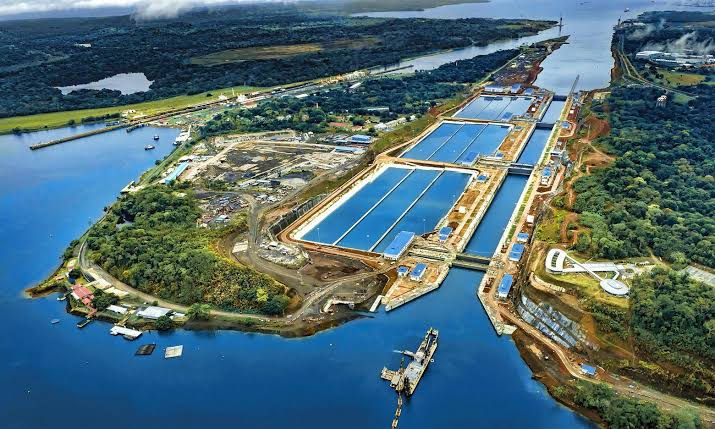
Panama Canal - History & Opportunity
- The Sikh Chamber of Commerce

- Sep 27, 2022
- 7 min read
Introduction
The Panama Canal is an 80 km long man made aquatic waterway, which connects the Pacific and Atlantic Oceans to enable the transit of merchant and naval vessels through it. This all weather channel became functional, on 15 August 1914. Annually, about 14,000 ships traverse this canal, to, sail along about 144 maritime routes which connect about 160 nations through, approximately 1,700 ports.
This canal is a marvel of marine engineering because, the mean sea level of both these oceans differs by about 26 meters. So, this canal has a system of compartmentalized locks and gates, wherein, once a ship enters, flooding or drainage of the compartment takes place, through a system of drains that, raises or lowers the ship to the level of the main Gatun Lake which straddles the Panama Canal.
This canal runs from the north to south direction in the State of Panama. All ships traverse this canal through three pairs of separate compartments in either direction. The ship first moves into a compartment through the locks. Then, water is either flooded or drained out of that compartment, to raise or lower the level of the floating ship to, overcome the oceanic mean sea level differential. These compartmentalized water locks are about 33 meters wide, 304 meters long and about 12 meters deep. So this is ‘that’ critical factor, which; limits the size of the ships that can pass through the Panama Canal. [1,2,3,4].
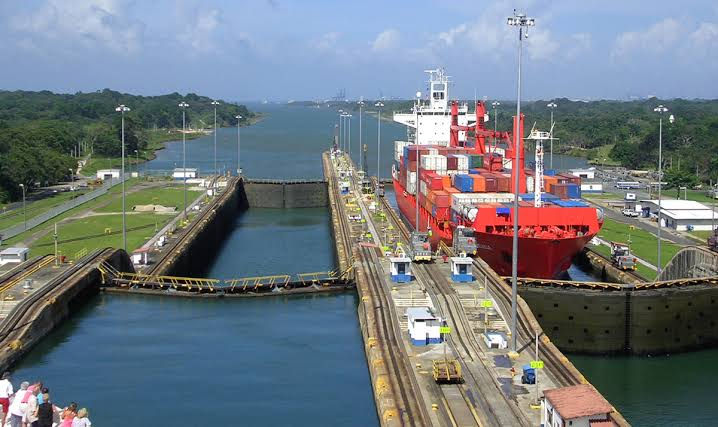
Geopolitical Perspectives
This canal was built by the US and now, it is controlled by the State of Panama through the Panama Canal Authority (ACP). The latter has signed multiple agreements with the Port Authorities of New York, New Jersey, Florida and many others, to enhance maritime cooperation and efficiency. It can be seen how the diverse Port Trusts or Authorities have keen jointmanship interests in the functioning of the ACP. Consequently, all these stakeholders collectively organize many trade, marketing and merchant vessel transit forecasting events, to reap shared benefits along with the ACP. [5, 6].
Choke Relevance
Till date, this interoceanic canal has saved considerable sailing time and wastage of perishable commodities over the century. A case to point is, the voyage of a banana laden merchant vessel from Ecuador to the European markets through this canal, saves about 8000 kilometers journey over its shortest alternative route via Terra Del Fugo. Similarly, a cargo ship from the east coast of the United States destined to Japan saves about five days sailing time or about 4800 kilometers when transiting through the Panama Canal. [7, 8].
Such shortening of maritime sea lanes, by the use of the Panama Canal, has prevented the generation of about 83 crore tons of carbon dioxide emissions by saving on sailing fuels. The ACP has now committed itself to becoming a carbon neutral establishment by the year 2030. [9]. This is a great environmental feat in itself. Moreover, this trade enabler canal’s, choke relevance, is self evident as per the aforesaid. Its economic relevance is enumerated further ahead.
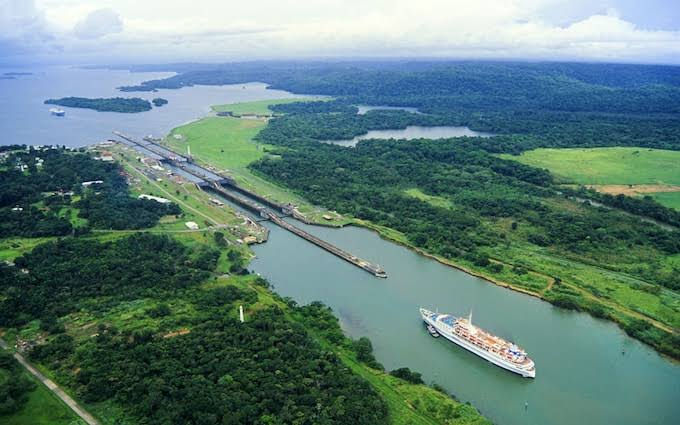
Economic Relevance
During the last financial year ending on 31 March 2022, the total category wise percentage of ships that crossed this canal included, Dry Bulk Cargo Carrier (27%), Chemical Tankers (23.2%), Container Ships (12.1%), Vehicle Carriers (7.3%), LPG Carriers (6.8%), Refrigerated Cargo Carriers (7.2%), General Cargo (6.6%), Crude Oil Tankers (4.4%), LNG Carriers (0.3%) and the remaining ships were of assorted types including Naval ships. [10].
As per the Panama Canal Authority, during the fiscal year 2021, the destination wise trade movement indicates, that, about; 72.5% of the total cargo originates at or is destined for the US; Chinese command about 22.1% share; Japan 14.7%; Republic of Korea 10.1%; Chile 9.7%; Mexico 7.3%; Canada 5.2% and balance of the share pertains to other nations. [11]. It is pertinent to note that even Canada routes its cargo through this canal in spite of touching both the oceans.
Challenges
The statistical data presented in the aforesaid paragraphs indicates, that any technical glitch or, a black swan type catastrophic incident on this choke point can quickly, convert it into crosshairs of a flash point that will have a; tremendously crippling financial, social, political and a macro cum micro economic global impact.
The throughput of this canal, has to be enhanced by improving and increasing the number of locks, introducing better haulage ships also called as Panamax ships, the deepening and periodic desilting of the canal, to ensure that large capacity ships, can cross unhindered. This will need multinational maritime, economic, data driven managerial modeling efforts to ensure that, this asset remains globally useful, by; evolving as per the changing designs of ships and cargo movement trends. India by virtue of its cerebral abundance, can take a lead in managing these challenges.
Opportunities for India and the World
The dimensions of the Panama Canal compartments between the locks and the channel depth, keeping in mind the draft ie the gap between the canal bed and the keel of the ship becomes the, cargo carriage optimization factor. For every increase in the safety draft distance, by one feet in height in the Neopanamax (new, better designed compartments with locks) locks; three hundred and thirty additional containers per ship can be carried. [12].
This will have a tremendous impact on the economies of scale and the resulting operating profits. To give an example for better appreciation, one commercial aircraft, merely carries about a container load of cargo. So, the impact of this improvement can be very well fathomed.
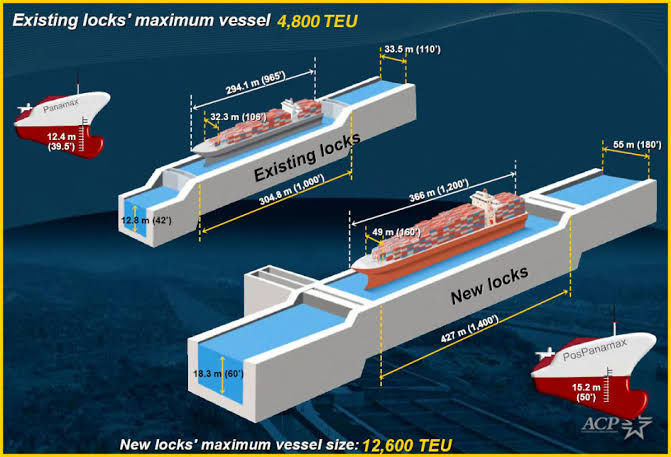
This capacity enhancement, can be further economically exploited by Indian data and logistics analysts, to forecast, plan and actualize logistics sorting, so that; voluminous but lightweight cargo, like phones or televisions, are containerized. Thus, more containers can be hauled through the canal without compromising on the load related, draft safety distance, below the keel to the canal floor.
Indian companies can also offer services that provide tidal, salinity related buoyancy and metrological conditions data including, water turbulence information. They can use the existing empirical data, duly remodeled by real time sensor readings and provide, accurate real time navigational inputs, to the captain of the ship in lieu for payments.
This will enable the ships, to plan their voyages while still being out at sea, thus optimizing their wait time at the canal mouth and increase their revenues and lower their operating costs. These companies will use artificial intelligence (AI) to analyze existing data and provide maritime queuing solutions to, optimize the throughput and waiting time of the sea vessels while maximizing the revenues for the ACP.
Some South American nations are politically quite dynamic. So Indian insurance companies can offer customized, ‘Political Risk Insurance’ (PRI), to ensure maritime trade continuity for small traders and their cargo boats to recover from political turbulence related losses. More details on PRI can be read in an article titled, ‘A Special Mitkat Report : Political Risk Insurance by Miss Isha Jaiswal’ in the Economic Times Edge Insights publication dated 01 July 2021. [13].
Indian maritime firms can engage the Indian diaspora in Canada, to aggregate the shipping of east west movement of Canadian cargo especially timber during the freezing winters. This will reduce accidental losses and delays due to; snow fall related road blockages. It will, not only enable, low cost perennial movement of goods through the canal between the different coasts of Canada but, also reduce, the need for ware housing, capital locking and ensure smooth supply chain operations for the Canadians.
The Indian judges and lawyers, specializing in internal trade and maritime laws, can, offer arbitration services through, video conferencing to quickly resolve global trade disputes, even when, the ships are sailing on the high seas, to save time and money for all. The low cost Indian technical manpower, in collaboration with, the Panamanian population can provide emergency repairs, predictive maintenance, limited barnacle removal, radar/ equipment calibration services etc to the ships, as they await their time to access the canal. Furthermore, Indians can also provide customized satellite communication based online tutorials to the professional maritime staff, for their professional upgradation, when they are operating on the high seas and have sufficient free time.
Specialized Indian companies, can also conduct promotional activities regarding the capabilities and the customer centric success of the Panama Canal by, organizing maritime events, press conferences, compose editorials and conduct public relations related information dissemination campaigns. This will enhance the goodwill of the ACP. Furthermore, Indian companies can commit themselves to the forecasting of future trade patterns, developing of better throughput traffic models, making modernization plans for the canal and also designing customized tariffs to minimize the logistics related inflation costs, as also, to maximize the revenues for ACP.
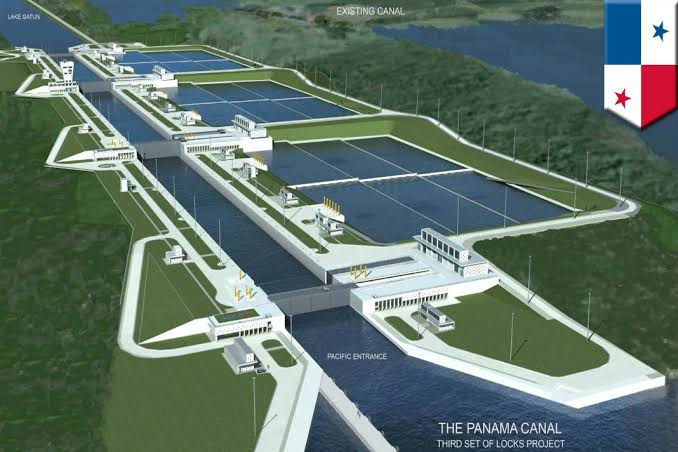
Conclusion
The Panama Canal is a wonder of the modern day maritime engineering. Its trade enabling benefits, are reaped globally by all consumers in terms of faster, cheaper delivery of products and with guaranteed timelines. It shortens the trade route by at least 4500 kilometers between the Americas and the Europe. This saves us from pollution, sailing charges and prevents organic product deterioration by all these facets enumerated above. This Canal now offers multiple knowledge based jobs for Indians and the global commercial citizens, who wish to integrate various fields of sciences and humanities with data analytics and commercial modelling to, enhance the Canal’s throughput and profits from operations.
About the Authors
Isha Jaiswal has published many articles on Political Science, International Relations (IR), Military History and Art. She passionately studies the concept, designing and implementation solutions of Polity, Governance and IR.
Harpreet Singh Jaiswal has published articles on Forensic Science and Environment. He has done an MBA in Finance and Marketing and has an inclination to forensic fraud investigation using statistics.
References.
DISCLAIMER: The contents of this blog are for information purposes only. It is not an official or professional advice on the subject matter. The blog post contains opinions of the authors, and these don’t reflect the views and the opinions of The Sikh Chamber of Commerce. While the authors have shared that they have made due effort to ensure content is accurate, yet there may be some mistakes, errors and omissions. The authors do not claim to be experts, thus, all of the information included on the post shouldn’t be regarded as professional advice. You are advised to do your own due diligence on the information and opinions share, however if you wish to rely on any information on the blog, you do so at your own risk.
TSCC




Comments